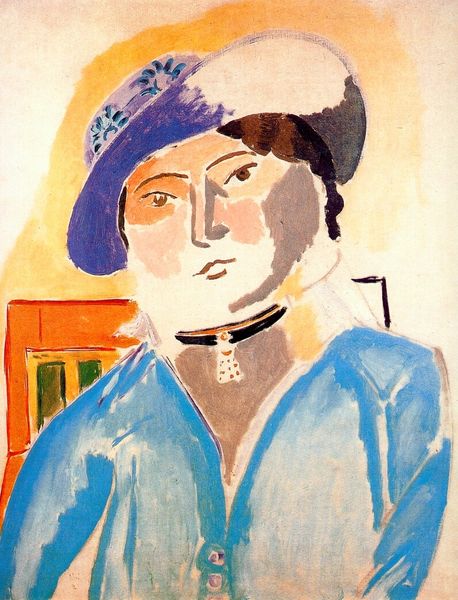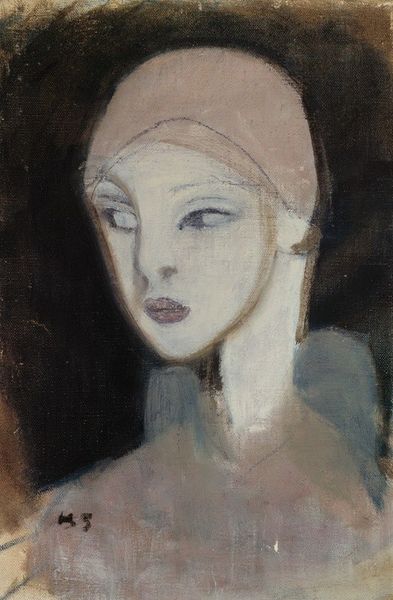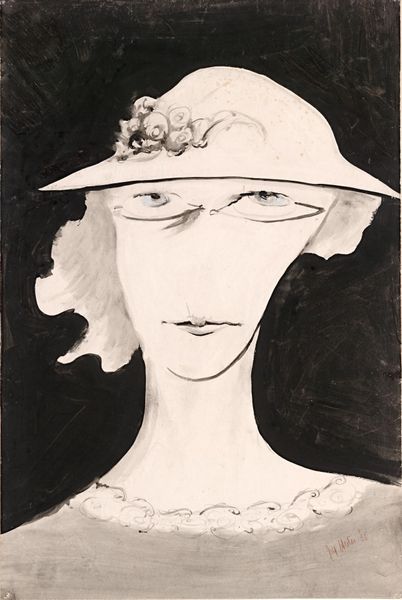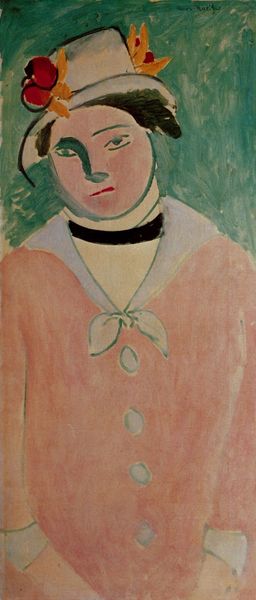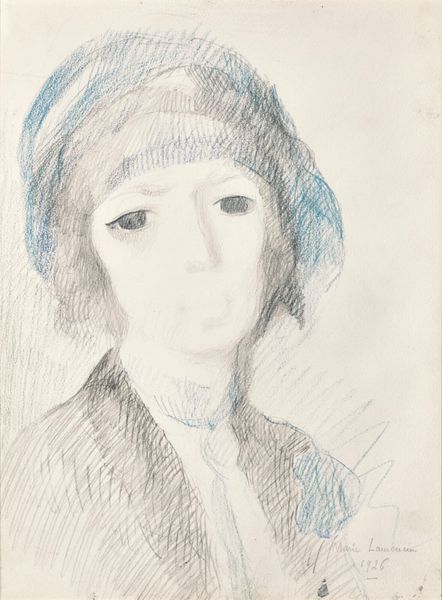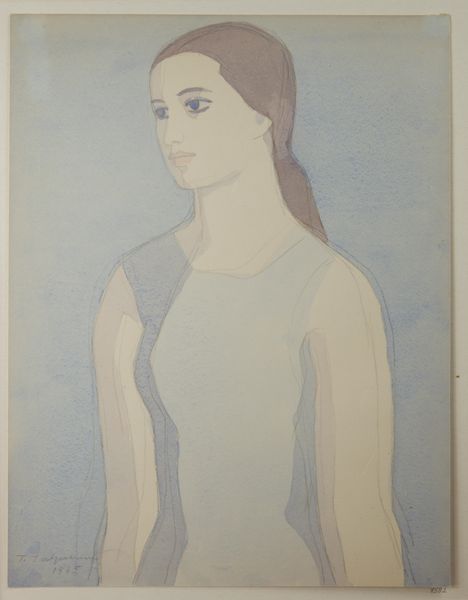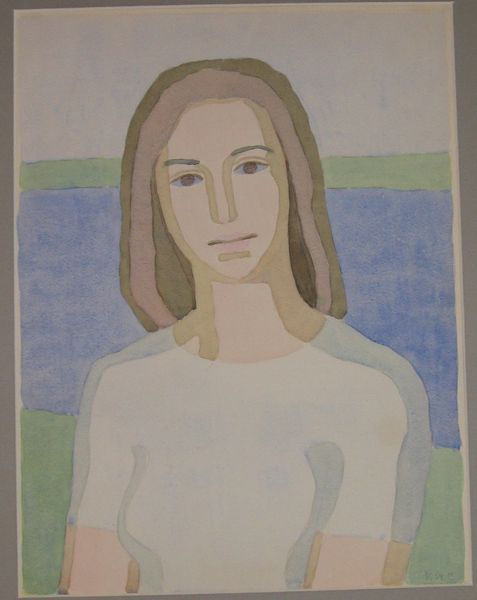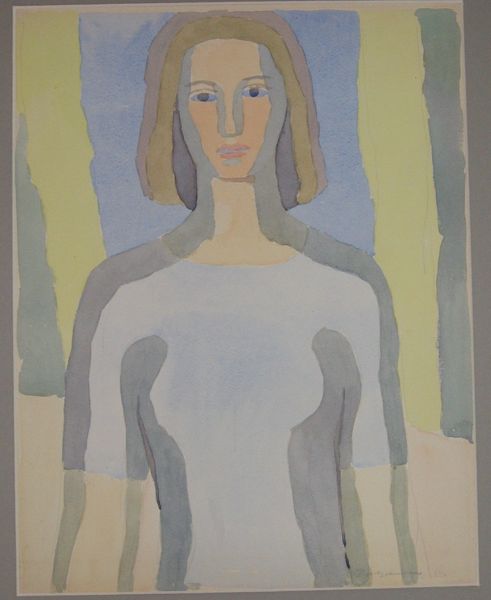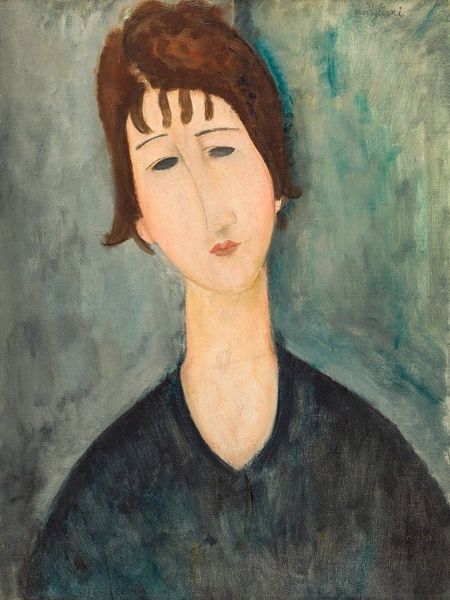
watercolor
#
portrait
#
cubism
#
art-nouveau
#
watercolor
#
watercolor
Copyright: Public domain US
Curator: Look at her! All sharp angles and muted tones. It's like she’s a melody trying to escape from sheet music. Editor: That's quite poetic. My initial reaction is that there is an interesting dynamic to unpack within the institutional space, the presentation of such stylized work. This is Marie Laurencin’s “The Blue Plume” from 1914. Made with watercolor. She was, as you know, at the heart of the Parisian avant-garde. But one ponders the criteria for a painting like this to enter this hall... Curator: A fair question. To me, though, this portrait feels almost ethereal. Laurencin’s women often have this wistful, dreamy quality, a sort of melancholic elegance, don’t you think? Especially striking is how she uses blue. It just hangs there like a memory, the color a stark contrast against her softer, muted palette. Editor: It’s also relevant to note, looking through a political lens, that in 1914, France was on the precipice of immense upheaval, and many artists wrestled with this anxiety of change. You almost sense it as she subtly hints towards Cubism here, just a fracture here or there, a questioning of how to represent reality and identity in a time when both were being radically redefined by both technology and society. And perhaps that sense of identity is visible within those colours as well, they can become coded signifiers... Curator: Precisely! Her gaze doesn’t hold back, does it? I sense a gentle power here. Even with these somewhat pastel tones, it’s so direct, so challenging to any male-dominated world... that neckline is sensual yet subtly unsettling, her choice to reveal herself almost dangerous... the soft watercolours act like a protective skin that still lets some barbs slip through. Editor: What I am intrigued by is how pieces such as this are remembered and canonised by our museums. The narrative built around art becomes self-perpetuating and thus creates art history. "The Blue Plume", within the right context, stands as an important document. Curator: Document or spell? Either way, thank you for walking me through how these brushstrokes fit into this cultural conversation. I’ll be sure to bring up such context with others… perhaps this way, we too can build our own art histories in conversation.
Comments
No comments
Be the first to comment and join the conversation on the ultimate creative platform.

